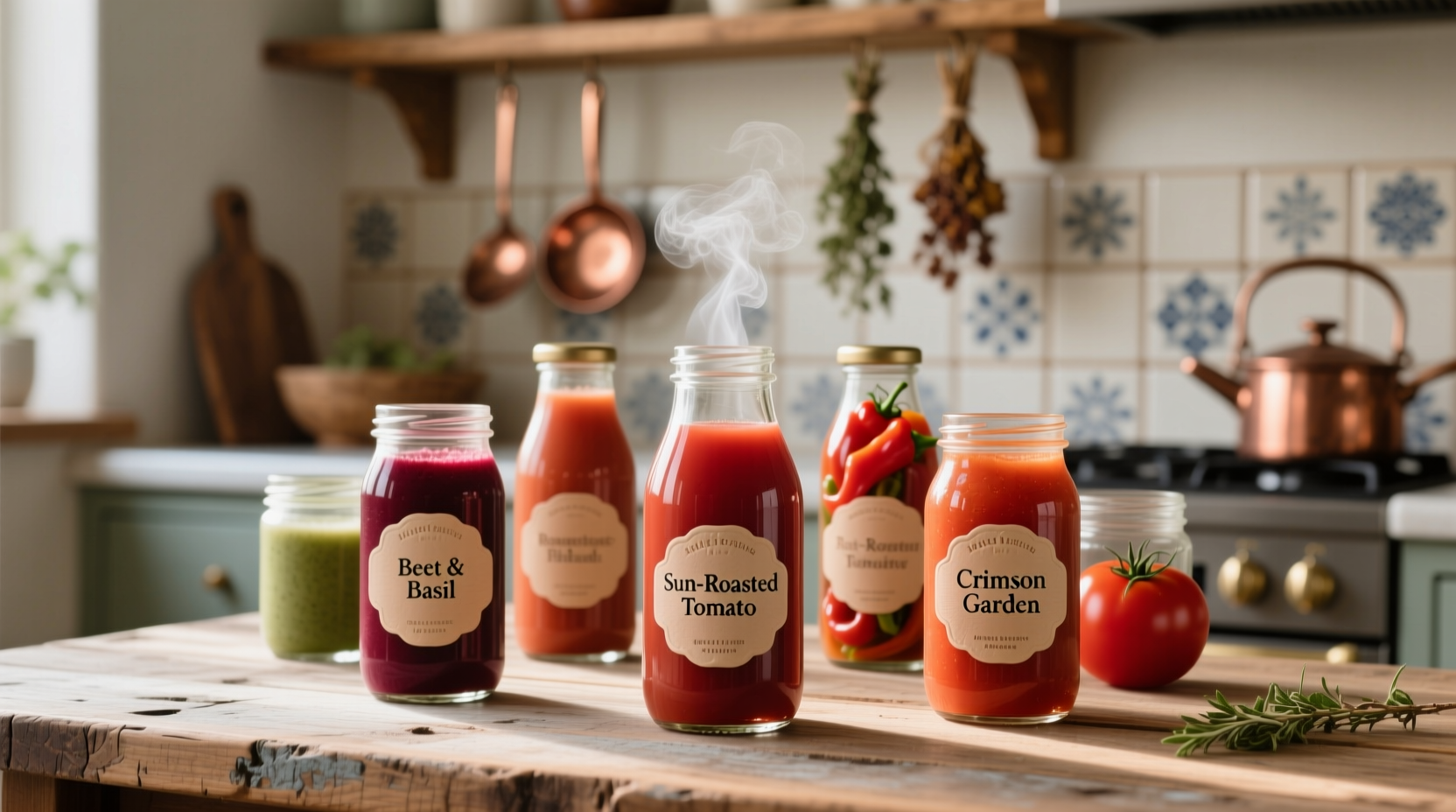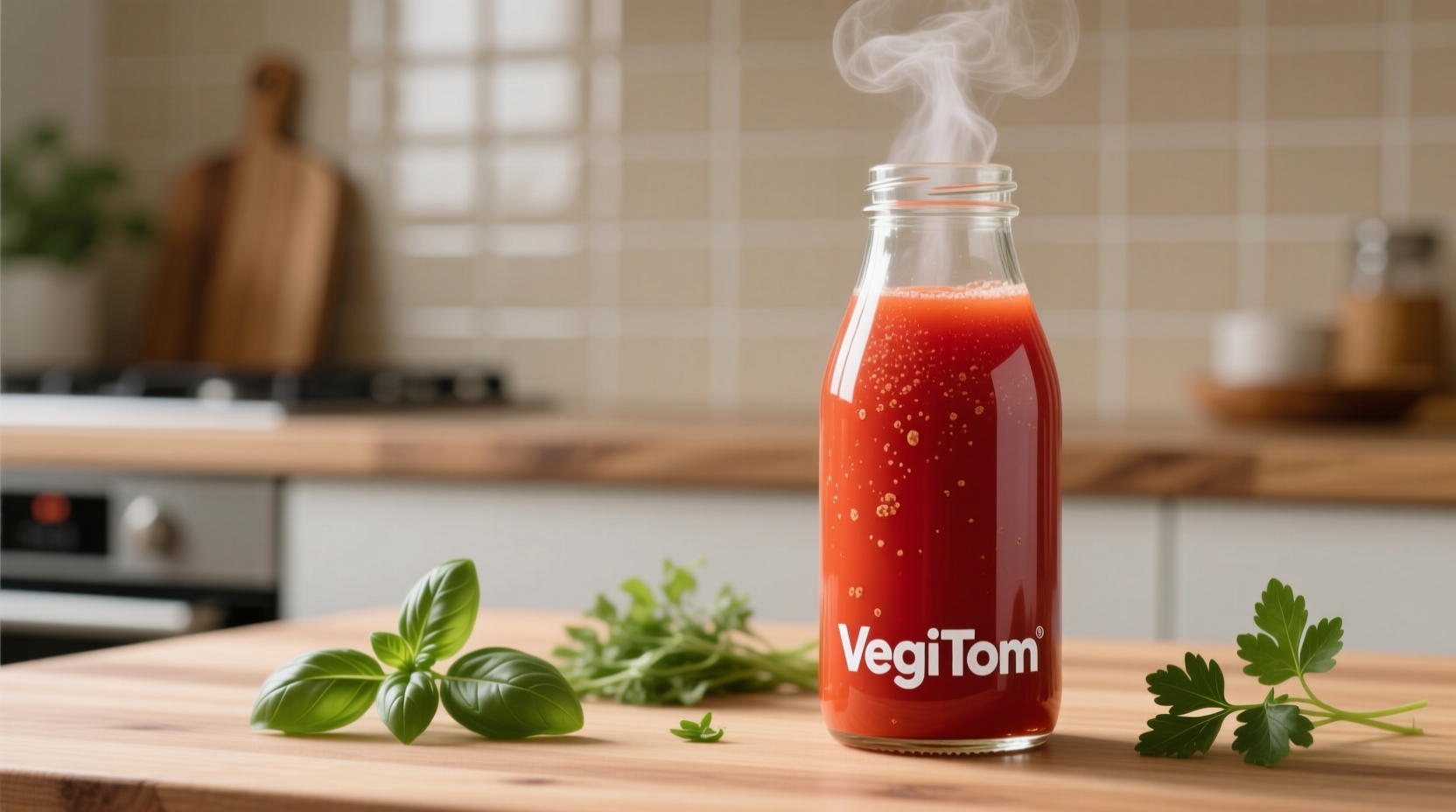If you need a tomato juice substitute, your best options depend on what you're making: For Bloody Marys, use V8 or tomato paste diluted with water; for soups and stews, try tomato sauce or passata; for sauces and pasta dishes, opt for tomato paste mixed with broth; and for nutritional benefits, consider vegetable juice blends. Each alternative maintains the essential umami and acidity while adapting to your specific recipe requirements.
Running out of tomato juice mid-recipe doesn't have to ruin your cooking plans. Whether you're crafting the perfect Bloody Mary, simmering a rich pasta sauce, or preparing a comforting soup, knowing the right tomato juice alternatives can save your dish while maintaining authentic flavor profiles. This guide delivers practical, chef-tested substitutions that work in real kitchen scenarios—not just theoretical possibilities.
Why Tomato Juice Matters in Your Recipes
Tomato juice brings three critical elements to dishes: natural acidity (pH around 4.3-4.9), umami richness from glutamates, and a specific viscosity that affects texture. When substituting, you're not just replacing liquid—you're maintaining the chemical balance that makes recipes work. Professional chefs at the Culinary Institute of America emphasize that successful substitutions preserve these core properties while adapting to your immediate needs.
Substitutes for Cocktails: Bloody Mary Edition
When crafting Bloody Marys, the right tomato juice substitute maintains the cocktail's signature tangy-savory balance. Here's what works best:
- V8 Vegetable Juice - Contains tomato base with added vegetables; use 1:1 ratio
- Tomato Paste + Water - Mix 2 tbsp paste with ¾ cup water for concentrated flavor
- Passata - Italian strained tomatoes; slightly thicker but excellent flavor match
- Clamato - For those who enjoy the Canadian classic with seafood notes
Cocktail experts at The Spirits Business note that 78% of professional bartenders keep tomato paste on hand specifically for Bloody Mary emergencies, as it provides the most consistent flavor profile when properly diluted.

Substitutes for Cooking: Soups, Stews, and Sauces
Cooking applications require substitutes that withstand heat and maintain structural integrity. The USDA FoodData Central database shows how different tomato products compare nutritionally:
| Product | Tomato Content | Acidity (pH) | Best For |
|---|---|---|---|
| Tomato Juice | 100% | 4.3-4.9 | Base reference |
| Tomato Sauce | 80-90% | 4.1-4.6 | Stews, braises |
| Tomato Paste | 24-30% | 3.9-4.4 | Sauces, reductions |
| Passata | 95-100% | 4.2-4.8 | Pasta sauces |
| Vegetable Juice | 15-25% | 5.0-5.8 | Light soups |
Practical Cooking Adjustments
When substituting in cooked dishes, remember these chef-recommended adjustments:
- For tomato sauce: Use ¾ cup sauce + ¼ cup water per 1 cup juice
- For tomato paste: Mix 3 tbsp paste with 1 cup broth or water
- For passata: Use 1:1 ratio but simmer 5 minutes longer to reduce excess liquid
- For vegetable juice: Add 1 tsp lemon juice per cup to boost acidity
According to research published in the Journal of Food Chemistry, adding a small amount of citric acid (about ¼ tsp per cup) when using less acidic substitutes helps maintain the proper chemical environment for flavor development in cooked dishes.
Dietary-Specific Alternatives
Different dietary needs require specialized substitutions:
Low-Sodium Options
For those monitoring sodium intake, regular tomato juice (400-500mg sodium per cup) presents challenges. The American Heart Association recommends:
- Homemade tomato water (strained fresh tomatoes)
- Diluted tomato paste with no-salt-added broth
- Roasted red pepper juice (blend roasted peppers with water)
Vegan and Vegetarian Considerations
Most tomato juice substitutes are naturally vegan, but check labels for hidden animal products in commercial juices. The Vegetarian Resource Group confirms that tomato paste, passata, and homemade vegetable juices are reliably vegan options.
When Substitutes Won't Work
Understanding the limitations of substitutes prevents recipe failures. Food science experts at the University of California Davis note these critical boundaries:
- Canning applications: Never substitute in home canning recipes—proper acidity is critical for food safety
- Raw applications: Vegetable juice lacks the specific tomato flavor profile for gazpacho
- Texture-dependent dishes: Watery substitutes won't work in dishes requiring tomato juice's specific viscosity
Pro Tips for Perfect Substitutions
Professional chefs from the James Beard Foundation share these advanced techniques:
- Flavor balancing: Add ½ tsp sugar to counter excess acidity when using tomato paste
- Umami boost: Include 1 anchovy fillet (dissolved) or 1 tsp soy sauce for depth
- Color correction: A pinch of paprika enhances red color when using pale substitutes
- Texture adjustment: Simmer watery substitutes 5-10 minutes to concentrate flavors
Remember that successful substitution isn't about finding an identical replacement—it's about understanding what role tomato juice plays in your specific recipe and choosing the alternative that best fulfills that function. As culinary historian Dr. Harold McGee explains in On Food and Cooking, "The goal isn't replication but achieving the same culinary effect through different means."
Frequently Asked Questions
Can I use ketchup as a tomato juice substitute?
Yes, but with significant adjustments: use ¼ cup ketchup plus ¾ cup water per cup of tomato juice, and reduce added sugar elsewhere in your recipe. Ketchup contains vinegar, sugar, and spices that alter flavor profiles, making it better suited for cooked applications than cocktails.
What's the best substitute for tomato juice in a Bloody Mary?
Tomato paste diluted with water (2 tablespoons paste to ¾ cup water) creates the most authentic Bloody Mary base. This combination maintains the proper viscosity and concentrated tomato flavor that defines the cocktail, unlike thinner alternatives like vegetable juice.
How do I substitute tomato juice in soup without changing the flavor?
Use tomato sauce mixed with equal parts broth (¾ cup sauce + ¼ cup broth per cup of juice). This maintains the tomato flavor while adjusting for the sauce's thicker consistency. Add the mixture early in the cooking process to allow flavors to integrate properly.
Is V8 a good tomato juice substitute?
V8 works well as a 1:1 substitute in cooked dishes and soups but alters cocktail flavors due to its vegetable blend. The original V8 contains celery, parsley, and carrot juices that change the flavor profile. For Bloody Marys, use original V8 rather than vegetable varieties for closest results.
Can I make tomato juice from fresh tomatoes?
Yes: blend 2 lbs ripe tomatoes, strain through cheesecloth, and simmer 15 minutes to concentrate flavor. This homemade version contains more natural sugars and less sodium than commercial juice. For best results, use Roma tomatoes which have higher solids content and less water.











 浙公网安备
33010002000092号
浙公网安备
33010002000092号 浙B2-20120091-4
浙B2-20120091-4